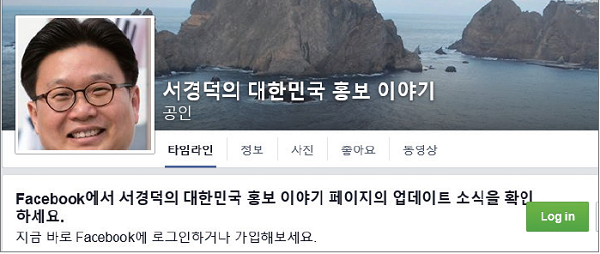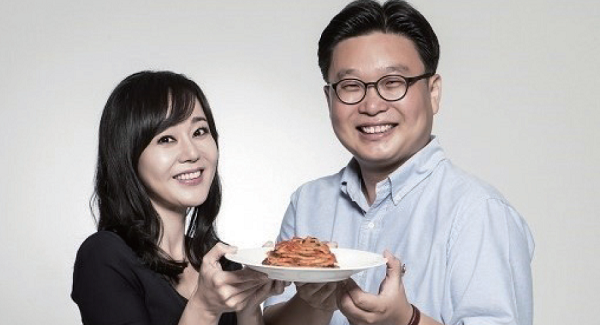
In an episode of Infinite Challenge, Professor Seo Gyeongdeok travelled to Hashima Island to see Takashima’s Consoling Tower respecting forced drafted Korean mining worker’s soul. The island was designated a UNESCO World Heritage site recently, highlighting Japan’s modernization. However, the site was built with the blood, tears, and sweat of drafted Korean workers. It is known that at present count 800 Koreans died there due to its inhuman working environment. After Infinite Challenge featured the abandoned tower, Koreans felt the need to fund and volunteer for its renovation in order to preserve it. The change in attitude of the Korean public was sparked by the show’s popularity, but also by Honourary Ambassador for Korean Culture Seo Gyeongdeok.

As Honorary Ambassador for Korean Culture, a well-respected professor, and holder of other titles, what activities are you currently involved with?
I am constantly striving towards the introduction and promotion of authentic Korean culture and history. Actually, I have been doing this for the past 20 years. However, my goal is not really introduction or promotion, but creating effective and meaningful ways of achieving that introductions and promotion, so I am always involved in nonstop communication with foreign people.
I believe keeping the public informed and knowledgeable about historical content is important, so I produce short 5-minute videos about historical figures in order to acquaint the younger generations with them. The major methods I am employing in these videos are ease and fun so that teens and people in their twenties sense a closer connection to them.

I am sure many people are familiar with your endeavor from your Twitter and Facebook accounts. Is there any reason you have chosen to utilize SNS?
SNS has both pros and cons, but I think the positives of being able to communicate with a variety of people outweigh the negatives, so that is the main reason I am active on SNS. Also, it offers a great means of advertising my campaign. With each like I receive, that post is then revealed to others on the liking person’s account. In other words, the postings are easily spread to others and foreigners as well. From here, people will gain an interest on the subject and postings on SNS dealing with Korean culture and history will naturally gain more attention and spread faster. As a result, many people will try to contact me.
Out of the many activities you are involved with, which one is the most rewarding?
Like The Sookmyung Times , many media have contacted me for an interview regarding my activities, but few university students have shown any interest in Korean culture and history, so I have rarely been visited by a student asking for advice on the subject matter or a career in this field. Since I am alone in my endeavor of introducing and promoting Korean culture and history, I face many obstacles and troubles. Still, I do my best for the cause and hope I attract interested students.
Moments when students visit me to learn about introducing Korea to the world are the most rewarding and thankful. After the Hashima Island episode was aired on Infinite Challenge , many university students were inspired to see the tower firsthand and got interested in restoring the tower. Their participation and interest leads to a butterfly effect, which is by far the proudest moment.

Surely it is not an easy job being the first person chosen as Honorary Ambassador of Korean Culture and History. Would you like to share with us some of the obstacles you faced and any hardships you worked through?
The biggest hardship I faced was the lack of support. Since my twenties, I dreamt of informing the world about Korea and debunking myths and untruths. I had so many ideas, but no one would listen. Most of those ideas were lost or tossed as I couldn’t get any one to sponsor me. One time, when I was attempted to establish Korean service at the New York Metropolitan Museum of Art, I had to visit over 200 companies and government branches asking for support. It took about one and a half years. With each rejection, I refused to give up and got more determined to make it happen. That was perhaps the most difficult event in my life because since that time I have been able to gain more support from people, companies, and government branches.
Specializing in a sensitive area must be difficult. Have you ever received any threats or malicious comments? If so, how do you deal with them?
Everyone has the right to an opinion and sometimes I have heard threatening and malicious comments directed at me, but I do not feel the need to respond. Since my work often involves conflicts with right-wing Japanese groups, I have met a number of haters who strongly disagree with me. If I were to give them my time or respond to their words, I would be giving them the attention they seek, so disregard is the best policy.

Your work has impacted many foreigners and Koreans. What is your most memorable activity?
Every activity I’ve done is remembered and cherished, but if I were to pick just one, I’d say when I got the issue of Dokdo Island into the New York Times . That was 10 years ago. I did my own fundraising for that campaign, but that is not why it is so meaningful. The ad was about Dokdo Island, a very pressing matter in Korea at that time. The ad was not created out of personal interest or to promote a certain company. It was made purely for public service awareness so that others would know what Korea was facing. I got involved with that project to spread knowledge about issues within Korea. I found myself very concerned with each little detail on the advert. Also, during its creation, many problems emerged and I worried whether it would even see publication. However, the importance of this project was too big to yield. 10 years have passed since it’s printing, but the impact was huge. People today are now more well-informed about the issue and pay attention to it. The amount of hard work makes me remember it vividly, so I will say it’s the most memorable.
Even if university student interest in Korean history is high, most often, they do not remember all the details. Would you like to comment on that?
Currently, no university student is ignorant of the Dokdo Island issue. However, when it comes to concrete details such as historical and geographical facts and international laws, most students do not know much about those details. Many times the Japanese government tries to extort the Dokdo issue as if it were debatable. However, it is not and the fault lies in Korea and our younger generations. Paying no heed to Japan’s absurd claims is not the answer. Koreans, especially university students, need to point out the flaws in Japanese logic. Before introducing the issue to the global society, Koreans need to know the facts about Dokdo, so being indifferent is the biggest problem. The rationale and facts about Dokdo can easily be searched on the Internet, so it is only a matter of one’s determination to learn about it. On the Ministry of Home Affairs’ website and on the webpage for Dokdo School, there is plenty of information that one can see and download.

Recently, Dokdo School Season 2 has opened. Would you please tell us a bit about Dokdo School?
Dokdo School mostly focuses on elementary, middle, and high school students. It is a program in which students visit the Independence Hall of Korea on a field excursion. The 1-day program asks students to use their five senses in order to learn about Dokdo. We created special textbooks just for the students for this purpose, and we give every student who joins the program orange stonecrop, which is a special plant that grows on Dokdo Island to grow in their homes. A great number of students are interested in this program and the demand is high, so it is hard to meet demand. Also, we need to secure more locations to meet the high demand. In just under 2 years, we will broaden the program to include university students. University clubs and whole major outings will be able to apply for the program. Also, individual students will be able to experience Dokdo School freely on weekends or in their free time. Textbooks matching the participants’ level will also be made as well.
Many university students are presently studying history in order to earn a license or gain a certificate for use on their resume. What are your thoughts on that?
It’s great that students are earning licenses and certificates on Korean History license even though they are merely doing it to flower their resumes. They will gain valuable knowledge through the license exam preparation. Of course, studying it because you want is ideal, but through this way, students will become more aware of historical facts, which will help solve current problems. I’ve been working hard to make Korean history testing obligatory on the university entrance exam. Obligatory Korean history study is not the ideal way, but it will make people more aware of historical facts, and knowledge of the past will help solve current historic related issues as well as spread correct information about Korea to the world.

What are your goals for the future?
Of course, I would like to keep doing what I am doing, but I am planning on directing my focus towards foreigners and ensuring they know Korean culture rather than just enjoy it. Knowing and enjoying are two completely different things. I’ve been working towards making Bibimbap an internationally treasured dish, but at the moment on those who visit Korea Town eat it. I hope that eventually it becomes an everyday commonly eaten dish at home for dinner. I think that would truly be globalization of Korean food, and I hope to work on this goal until it is achieved. That is my biggest goal.

What do you think is a proper view of history?
The best way is to view history is to look at it objectively. Right now, the Left and Right are fighting, and many people are asking for my opinion. However, being objective and putting oneself in other’s shoes is important. We need understanding, must acknowledge differences, and try to make the best out of every situation.
Seo Gyeongdeok
• Professor of Sungshin Women’s University
• Independence Hall of Korea Public Relations Ambassador
• Consultant for the Ministry of Culture, Sports and Tourism
• National Brand Committee Member
• First Principal of Dokdo School


